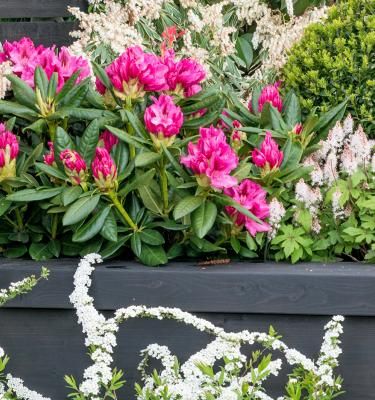If your plants currently struggle against clay soil or poor water drainage, raised flower beds are an easy way to combat the problem. If you suffer from weak knees or a bad back, they let you enjoy gardening without the physical strain. And if your outside space is paved or shingled, raised flower beds, just like container gardening, can give you a way to introduce planting without major upheaval.
Making your own raised flower bed planter is surprisingly easy, and has a couple of distinct advantages over buying a pre-made one from your local garden centre. First, you get to decide exactly what size you want it to be - handy if your garden is on the bijou side or you have an awkward space to fill.
Second, you choose the materials - which means you decide on the perfect finish for you, and you can even use up all those off-cuts of wood you've got left over from other projects, making them potentially both environmentally friendly and cost effective.
Making your own raised flower bed
What you need:
- 2 x wooden planks for the sides
- 2 x wooden planks for the ends
- Wood screws suitable for outdoor use
- An electric drill
Note: raised flower beds should be between 6 and 12 inches high to give your plants adequate space for the roots to grow, so as a guide, the width of your planks needs to fall somewhere in this region. For flowers, the shorter end of this range will usually suffice.
Method:
- If possible, use a flat surface such as a patio, driveway or garage floor.
- Lay out your planks in a rectangle, exactly how you're going to be fitting them together.
- Take one of your end planks and place it flush against the end of one of your side planks, to form one corner of your planter.
- Using your electric drill, pre-drill holes straight through your end plank and into the end of your side plank - for a six inch high planter one at the top and one at the bottom will be enough, but for anything taller add one in the middle too. (Pre-drilling reduces the chances that the wood will split, and improves the hold of the screw).
- Repeat for all four corners of your planter, until you have something resembling flat-pack furniture - four pre-drilled planks with a corresponding screw for each hole.
- Now, using the pre-drilled holes and your drill, screw the planks together, one corner at a time - and your planter is complete!










